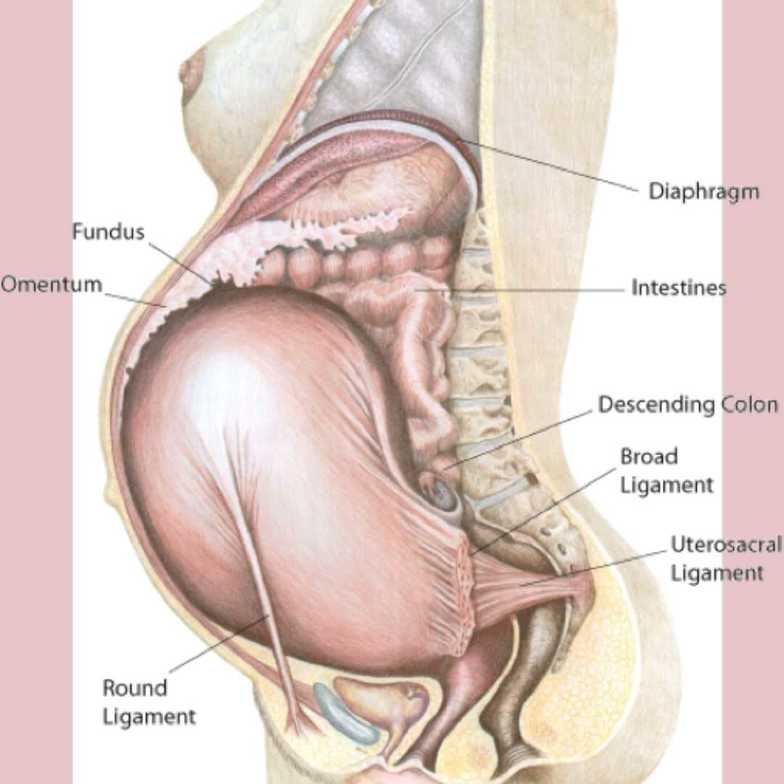
In our office, we view pregnancy as a marathon, not a sprint. Birth is an incredibly athletic event, but the journey to get there doesn't have to be painful. You may not be surprised to learn that on average, 90% of pregnant people experience low back pain (1,2). However, while low back pain and sciatica are common during pregnancy, that doesn't mean these symptoms are normal or should be accepted as inevitable.
As a chiropractor, I’m trained to assess not only the spine and joints of the body, but also ligaments, muscles, and nerves. One of the most rewarding facets of practice is working with pregnant patients to help them better manage their musculoskeletal pain. We offer a safe approach for the expecting mom who is looking for alternatives to painkillers to manage their pain. I’m certified in the Webster Technique, which uses a table with moving parts and a pregnancy pillow to safely accommodate your growing belly. There is no turning, twisting, or "cracking" involved with this approach. But why would you need to see a chiropractor at all during pregnancy?
As your baby grows, your body changes. To prepare your body for the growth of the baby and eventually labor, your body begins to release the hormone relaxin. Relaxin is what allows the ligaments, tendons, and joints to become less taut. The effects of relaxin are especially seen in the pelvis, where there is a high concentration of ligaments. As these structures begin to soften, it’s not uncommon to have an increase in pain in this region as the surrounding tissues begin to work overtime to add support. Your center of gravity shifts forward as the baby grows and more stress is being placed on the front of your body. To compensate for this, your lower back muscles begin to work harder to support your spine, pelvis, and abdominal muscles. This extra work can lead to sciatica, round ligament pain, low back pain, and even pain in the neck, arms, upper back, and feet.
Many patients complain of round ligament pain during pregnancy. This is commonly felt upon waking, rolling over in bed, or making quick movements throughout the day. The round ligaments are located between the front of your hip and your belly button, and are what attach your uterus to your pelvis. Depending on both the effects of relaxin and how your pelvis is aligned, there may be extra tension of one round ligament when compared to the opposite side. By releasing the more taut side through gentle compression of the ligament, as well as light adjustments to the pelvis and sacrum, we can help restore balance to the body and decrease your pain! Patients have reported feeling stronger, more steady, and more mobile after receiving chiropractic care during pregnancy.
Here are some additional reasons to seek out chiropractic care during pregnancy:
1. Chiropractic adjustments can help to relax the pelvic floor during the second trimester of pregnancy (3).
2. Pregnant patients who seek out chiropractic care had a significant reduction in pain compared to those who had obstetric care alone (4).
3. Chiropractic care is recommended by the American Pregnancy Association.
4. Chiropractic care during pregnancy is safe, and adverse effects are minimal (5).
Not only can we help to manage your pain, but we can also coach you on how to breathe, move, and modify your exercise during pregnancy in a way that's safe and unique to you. Every body is different, and every pregnancy is different. In our office, we promise to honor your body and work with you as your teammate to reach your personal goals during pregnancy and beyond.
We love working together as a part of your birth team - OB/GYNs, doulas, midwives, lactation consultants, acupuncturists, massage therapists and pelvic floor therapists - to get you feeling your best.
I'm always available to answer your questions or concerns. Reach out if I can be of any help!
Schedule an appointment or free consultation here: https://amplifyhealthchiro.janeapp.com/
Evidence:
1. Ostgaard HC, Andersson GB. Postpartum low-back pain. Spine (Phila Pa 1976). 1992 Jan;17(1):53-5. doi: 10.1097/00007632-199201000-00008. PMID: 1531555.
2. Schwerla F, Rother K, Rother D, Ruetz M, Resch KL. Osteopathic Manipulative Therapy in Women With Postpartum Low Back Pain and Disability: A Pragmatic Randomized Controlled Trial. J Am Osteopath Assoc. 2015 Jul;115(7):416-25. doi: 10.7556/jaoa.2015.087. PMID: 26111129.
3. Haavik H, Murphy BA, Kruger J. Effect of Spinal Manipulation on Pelvic Floor Functional Changes in Pregnant and Nonpregnant Women: A Preliminary Study. J Manipulative Physiol Ther. 2016 Jun;39(5):339-347. doi: 10.1016/j.jmpt.2016.04.004. Epub 2016 May 6. PMID: 27157677.
4. George JW, Skaggs CD, Thompson PA, Nelson DM, Gavard JA, Gross GA. A randomized controlled trial comparing a multimodal intervention and standard obstetrics care for low back and pelvic pain in pregnancy. Am J Obstet Gynecol. 2013 Apr;208(4):295.e1-7. doi: 10.1016/j.ajog.2012.10.869. Epub 2012 Oct 23. Erratum in: Am J Obstet Gynecol. 2014 Jun;210(6):574-5. PMID: 23123166.
5. Stuber, K.J., Wynd, S. & Weis, C.A. Adverse events from spinal manipulation in the pregnant and postpartum periods: a critical review of the literature. Chiropr Man Therap 20, 8 (2012). https://doi.org/10.1186/2045-709X-20-8
Dr. Rachel Schein
Contact Me



